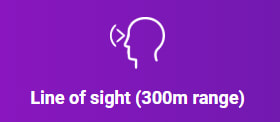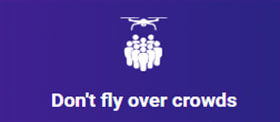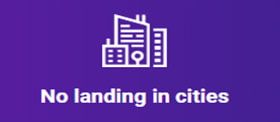FIRST THE BASICS
Drone flight in St. Lucia can be the perfect opportunity for budding and seasoned photographers. Learn the island’s drone laws as well as where to fly for the best photo ops.
St. Lucia Drone Laws and Regulations
With drones quickly becoming a popular hobby among novices and enthusiasts alike, knowing the rules and regulations surrounding their use before you fly one in St. Lucia is important. It is completely legal to fly drones in St. Lucia, according to the Ministry of Transport and Civil Aviation (MCTA), but there are some regulations that must be strictly adhered to.
If you have questions not covered here, you can contact the MCTA contact, Amy Charles, at [email protected] or by calling 758.457.6116.
If you have questions not covered here, you can contact the MCTA contact, Amy Charles, at [email protected] or by calling 758.457.6116.
|
|
|
Basic St. Lucia Drone Operation Rules
- When you arrive in St. Lucia, you MUST declare your drone with customs as well as make a declaration that you intend for the drone to return home with you.
- Before you can operate a drone in St. Lucia for ANY reason, you MUST apply and receive approval from the Civil Aviation Department at St. Lucia’s Ministry of Economic Development, Urban Renewal, Housing, Transport and Civil Aviation.
- The three mile radii around Hewanorra International Airport (UVF) in Vieux Fort and George F.L. Charles (SLU) Airport in Castries are considered “No-Drone Zones”, though commercial operators are able to apply for an exception.
- If you will be flying outside the No Drone Zone, but within a 5 mile radius of either of the island’s airports, you must contact Air Traffic Control at said airport and report both the location and duration of your drone flight.
St. Lucia Drone Applications
If you are looking to apply to fly a drone in St. Lucia, you should do so in writing. You can email your application to [email protected] and cc: [email protected]; [email protected] or send it via post to the following address:
Permanent Secretary
Department of Economic Development, Transport and Civil Aviation
First Floor
Finance Administrative Centre
Pointe Seraphine
Castries
SAINT LUCIA
When completing an application to fly a drone in St. Lucia, be sure to include the name and contact information (both home and while on the island) for the applicant as well as anyone else who will be piloting the drone.
You should explain the purpose the drone will serve, whether it is hobby flying, photography, etc. Giving the manufacturer and model of the drone as well as its serial number is also required, as well as any details regarding when, where, and for how long you will be flying the drone on the island.
General Rules for Drone Flight in St. Lucia
- Stay out of the five mile radius surrounding the airports unless you have a permit and have spoken with Air Traffic Control
- Stay in a visual line of sight of the drone
- Keep drone flight to daylight and civil twilight hours
- Do not fly the drone directly above people
- Keep the drone at an altitude of less than 400 feet and below 100 miles per hour
- Always yield the right of way to manned aircraft and keep an eye out for low flying helicopters
Top Spots for St. Lucia Drone Flight
While the beautiful landscape of St. Lucia lends itself well to drone flight, there are certainly top spots for those seeking the best photos and video without encroaching on private property.
- Tet Paul Nature Trail- While hiking this nature trail is a great way to see St. Lucia, you can’t beat the views from the air. From Traditional House and Kaye Kassave to Jalousie Bay and more, the sights from above the trail are certain to provide great footage.
- The St. Lucia Pitons- The Pitons are easily St. Lucia’s most iconic landmark, even being represented on the nation’s flag, and with good reason. These beautiful volcanic twin peaks are a sight to behold, and there’s no better way to see them than via drone. With the expanse of the Caribbean below and the whole of the island visible from above the peak, flying above the Pitons is a photography experience that you won’t want to miss.
- St. Lucia’s Waterfalls- In addition to majestic volcanoes, St. Lucia is also home to a lush rainforest with numerous waterfalls. These waterfalls are majestic enough when you visit them on foot, but as viewed from a drone, they are nothing short of a miracle of nature.
- Enbas Saut Trail- When it comes to St. Lucia waterfalls, perhaps none are as popular as Enbas Saut. This stunning rainforest trail lends itself easily to drone footage, and the waterfall at the end of the trail is one of the most stunning to be found anywhere.
- St. Lucia Beaches- While St. Lucia’s rainforests and volcanoes are perhaps its best known features, there is nothing more breathtaking than a beautiful slice of Caribbean waterfront. Flying over St. Lucia’s many beaches, such as Sugar Beach, Anse Chastanet, or Hummingbird Beach, offers the chance for some absolutely captivating photographs, especially at sunrise or sunset.





